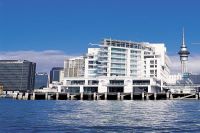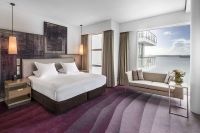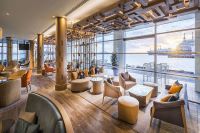Venue & Hospitality
Hilton Auckland
Conference Dates: June 29-30, 2022
Hotel Services & Amenities
- Audio/Visual Equipment Rental.
- Business Center.
- Business Phone Service.
- Complimentary Printing Service.
- Express Mail.
- Fax.
- Meeting Rooms.
- Office Rental.
- Photo Copying Service.
- Secretarial Service.
- Telex.
- Typewriter.
- Video Conference.
- Video Messaging.
- Video Phone.
- ATM.
- Baggage Storage.



Transportation
Driving Directions to
Route Map
About City
Auckland (MÄori: Tamaki Makaurau) is a large metropolitan city in the North Island of New Zealand. The most populous urban area in the country, Auckland has an urban population of about 1,463,000 (June 2021).It is located in the Auckland Region—the area governed by Auckland Council—which includes outlying rural areas and the islands of the Hauraki Gulf, and which has a total population of 1,715,600. While Europeans continue to make up the plurality of Auckland's population, the city became multicultural and cosmopolitan in the late-20th century, with Asians accounting for 31% of the city's population in 2018. With its large population of Pasifika New Zealanders, Auckland is also home to the biggest ethnic Polynesian population in the world. The MÄori-language name for Auckland is Tamaki Makaurau, meaning "Tamaki desired by many", in reference to the desirability of its natural resources and geography.
The Auckland isthmus was settled by MÄori circa 1350, and was valued for its rich and fertile land. Many pÄ (fortified villages) were created, mainly on the volcanic peaks. By the early 1700s, Te Waiohua, a confederation of tribes such as NgÄ Oho, NgÄ Riki and NgÄ Iwi, became the main influential force on the Auckland isthmus, with major pÄ located at Maungakiekie / One Tree Hill, MÄngere Mountain and Maungataketake.The confederation came to an end around 1741, when paramount chief Kiwi TÄmaki was killed in battle by NgÄti WhÄtua hapÅ« Te TaoÅ« chief Te Waha-akiaki. From the 1740s onwards, NgÄti WhÄtua ÅŒrÄkei became the major influential force on the Auckland isthmus.The MÄori population in the area is estimated to have been about 20,000 before the arrival of Europeans.The introduction of firearms at the end of the eighteenth century, which began in Northland, upset the balance of power and led to devastating intertribal warfare beginning in 1807, causing iwi who lacked the new weapons to seek refuge in areas less exposed to coastal raids. As a result, the region had relatively low numbers of MÄori when settlement by European New Zealanders began.
Trams and railway lines shaped Auckland's rapid expansion in the early first half of the 20th century. However, after the Second World War the city's transport system and urban form became increasingly dominated by the motor vehicle.Arterial roads and motorways became both defining and geographically dividing features of the urban landscape. They also allowed further massive expansion that resulted in the growth of suburban areas such as the North Shore (especially after the construction of the Auckland Harbour Bridge in the late 1950s), and Manukau City in the south.
Economic deregulation in the mid-1980s led to very dramatic changes to Auckland's economy and many companies relocated their head offices from Wellington to Auckland. The region was now the nerve centre of the entire national economy. Auckland also benefited from a surge in tourism, which brought 75 percent of New Zealand's international visitors through its airport. Auckland's port handled 31 percent of the country's container trade in 2015.
